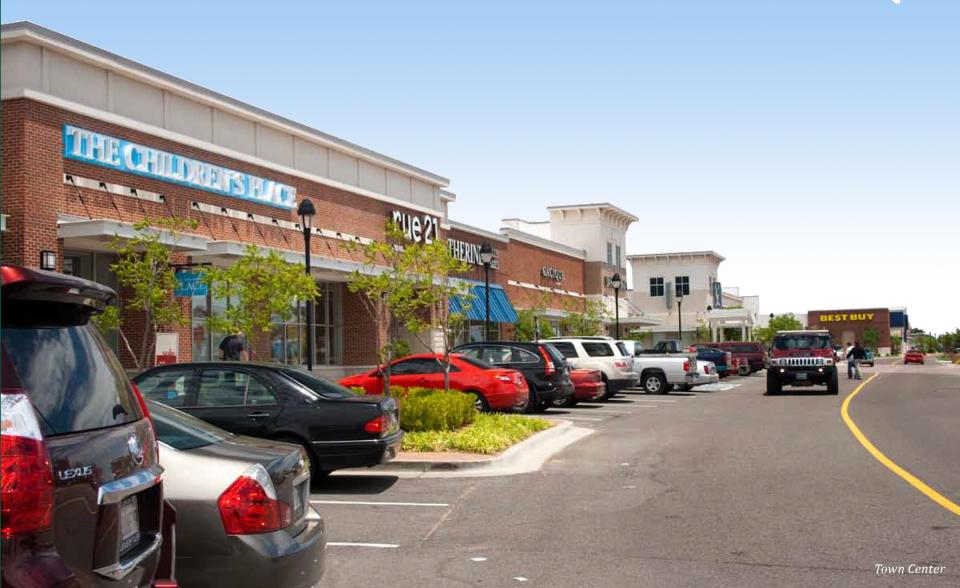
The Economy & the Retail Market
Here is the progression: 2008 was a shock, 2009 was depressing, 2010 is a year of hope; and, perhaps, 2011 will be a year of action.
Virtually everyone – owners, retailers, brokers (okay, maybe not bankers) – feels better about the economy and where the retail market is today. No doubt, part of this hope is fueled by the belief that 2009 saw the bottom of the recession and the retail market.
We’ve pulled back from the precipice and adjusted to the realities of the marketplace.
Nationally there has been some good news: GDP growth is up slightly, unemployment is down slightly, corporate earnings have generally been pretty good. Consumers are gradually starting to think good thoughts (see the ICSC consumer survey results on the back cover).
National retailers have gotten lean and generated better operating numbers by reducing inventory, downsizing staffs, closing unproductive stores. >National and regional retailers are dusting off expansion plans and beginning to look forward. This is confirmed by the significant increase in interest we’ve seen from the retailers we represent as well as the activity at properties we lease.
Most of the interest is cautious and in preliminary stages at this point, but it’s a good sign retailers are talking and beginning to look for space. Our sense is that if retailers begin looking now, it will be for deals in 2011 and 2012 although a few may get done this year. Our hope is tempered by a lingering sluggishness in the general economy.
Despite the positive economic trends, the amount of national debt, state government funding problems, stubbornly high unemployment, and the continued shake-up of large parts of our economy – health care, environmental regulation, financial regulation – continues to create uncertainty. As we’ve discussed in prior reports, uncertainty acts as a drag on consumer spending.
Consequently, we see a period over the next 18 months of good news and progress intermixed with setbacks. Two steps forward and one step back if you will.
It just won’t feel like we’ve made great strides but at the end of 2011 we’ll look back and see that the market improved markedly and that we are poised for significant growth.
In this interim period, let’s review a few trends taking place in the retail market. Restaurants and discounters have been the most active retailers over the past year; expect this trend to continue. Many second tier retailers are realizing that they can, because of vacancies and lower rates, acquire locations that they could never have had access to in a strong market. This window is closing and these retailers will need to act.
Large box vacancies being taken off the market are generally leased at rates 30 to 50 percent lower than the previous tenant and to tenants that are a lower quality credit. Additionally, most national and regional tenants are not exercising renewal options which contain increases but are negotiating new deals to stay at existing or reduced rates. This window is closing as well, but slowly.
As a result, 2011 may be the worst year yet for owners given the cumulative effects of the closures over the past two years, lower current lease rates and the hard bargains tenants are driving on renewals.
It takes a couple of years for the full effects of a downturn to be felt by owners.In addition to the sluggish economy making retailers cautious about expansion plans, most have cut inventories and staffs over the past two years.
Gearing up will take some time.
Many retailers have also changed their ideal store size – Staples, Walmart, Old Navy, Bed, Bath & Beyond among others have reduced their footprint. Existing deals are being cut with owners to reduce current spaces.
Overall, this will create new vacancies, and in some cases, owners will get back odd-sized or difficult to lease space. New space requirements will be less.
Constrained capital markets make it harder for owners to fund new deals or the tenant improvements for downsizing tenants. Lack of capital also limits retailers’ ability to fund their expansions both in terms of real estate and inventory.
As a result, owners with deep pockets and retailers with strong balance sheets will be in a favorable position.
Survey Summary
Note: Heritage Park Mall has been closed as a retail mall and we do not anticipate it re-opening as retail.
Consequently, we are taking the Mall out of our survey and re-classifying the still open Sears store as a freestanding building. Crossroads Mall, which is 75% vacant and for sale, remains in the survey for now.
This survey evaluates the occupancy of 230 retail centers (in excess of 25,000 s.f.) containing approximately 28.2 million square feet. In addition, we will be looking at the overall market, including freestanding properties that are not part of a shopping center.
We have surveyed 235 freestanding buildings containing in excess of 12.3 million square feet; at mid-year, approximately 4% of this space was vacant.
With these two types of properties combined, we have about 40.5 million square feet of space available for retail use (excluding strip centers with less than 25,000 s.f.).
Market vacancy equaled 14.0% at mid-year. For comparison purposes, adding back in the Heritage Park vacancy puts the market vacancy at 14.8%, the same as year-end.
If you take both Heritage Park Mall and Crossroads Mall out of the survey, the market vacancy stands at 10.9 percent, unchanged from year-end.
Clearly there has been some activity in the market, but mostly tenants moving or upgrading locations. And, any space taken by new tenants to the market or expansions has been roughly equaled by closures or newly built space added to inventory.
There continues to be a significant number of smaller strip centers in the market (under 25,000 s.f. in size). We would estimate there are easily 3 million square feet of these properties in the market. Many of these centers are struggling in the current recessionary market.
Click here to download the Price Edwards & Company 2010 Mid-Year OKC Retail Market Summary.




